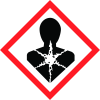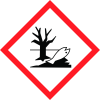Nitrate Test in freshwater Method: colorimetric with color card 10 - 25 - 50 - 75 - 100 - 125 - 150 mg/l NO₃⁻ MColortest NO₃ -1
Merck KGaA
Revision date : 2019-10-15



Note: Ingredients listed on restricted chemical lists
EC/CAS
10043-35-3
Name of the chemical
Boric acid
Concentration
N/A
EC/CAS
7440-43-9
Name of the chemical
Cadmium (Cd)
Concentration
N/A
General Information
Revision date
2019-10-15
Product name
Nitrate Test in freshwater Method: colorimetric with color card 10 - 25 - 50 - 75 - 100 - 125 - 150 mg/l NO₃⁻ MColortest NO₃ -1
REACH No
This
Emergency telephone
Customer Call Centre + 62 0800 140 1253 (Toll Free
Icons in SDS
Company Information
Company name
Merck KGaA
E-mail address of the competent person responsible for the Safety Data Sheet
prodsafe@merckgroup.com
GHS Information
Signal word
Danger
Hazard Codes
Hazard statements (CLP)
H315, H317, H319, H332, H341, H350, H360FD, H373, H411
Hazard statements
Code
Statements
H315
Causes skin irritation
H317
May cause an allergic skin reaction
H319
Causes serious eye irritation
H332
Harmful if inhaled
H341
Suspected of causing genetic defects
H350
May cause cancer
H360FD
May damage fertility; May damage the unborn child
H373
May causes damage to organs through prolonged or repeated exposure
H411
Toxic to aquatic life with long lasting effects
Precautionary statements
Code
Statements
P201
Obtain special instructions before use.
P273
Avoid release to the environment.
P280
Wear protective gloves/protective clothing/eye protection/face protection.
P302+P352
IF ON SKIN: wash with plenty of water.
P305+P351+P338
IF IN EYES: Rinse cautiously with water for several minutes. Remove contact lenses if present and easy to do - continue rinsing.
P314
Get medical advice/attention if you feel unwell.
P370+P378
In case of fire: Use ... to extinguish.
Section 2
EU Classification
CLASS regulations 2013 Acute toxicity, Category 4, Inhalation, H332 Skin irritation, Category 2, H315 Eye irritation, Category 2, H319 Skin sensitisation, Category 1, H317 Germ cell mutagenicity, Category 2, H341 Carcinogenicity, Category 1B, H350 Reproductive toxicity, Category 1B, H360FD Specific target organ toxicity - repeated exposure, Category 2, Inhalation, Kidney, Lungs, Bone, H373 Long-term (chronic) aquatic hazard, Category 2, H411 For the full text of the H-Statements mentioned in this Section, see Section 16.
2.2 Label elements
Labelling according to CLASS regulations 2013
Signal word
Danger Danger
Hazard statements
H350 May cause cancer. H360FD May damage fertility. May damage the unborn child. H315 Causes skin irritation. H317 May cause an allergic skin reaction. H319 Causes serious eye irritation. H332 Harmful if inhaled. H341 Suspected of causing genetic defects. H373 May cause damage to organs (Kidney, Lungs, Bone) through prolonged or repeated exposure if inhaled. H411 Toxic to aquatic life with long lasting effects. H350 May cause cancer. H360FD May damage fertility. May damage the unborn child. H317 May cause an allergic skin reaction. H341 Suspected of causing genetic defects.
Prevention
P201 Obtain special instructions before use. P273 Avoid release to the environment. P280 Wear protective gloves.
Response
P302 + P352 IF ON SKIN: Wash with plenty of soap and water. P305 + P351 + P338 IF IN EYES: Rinse cautiously with water for several minutes. Remove contact lenses, if present and easy to do. Continue rinsing. P314 Get medical advice/ attention if you feel unwell. P370 + P378 In case of fire: Use powder for extinction. Restricted to professional users. Reduced labelling (≤125 ml)
Precautionary statements
P201 Obtain special instructions before use. P280 Wear protective gloves. P302 + P352 IF ON SKIN: Wash with plenty of soap and water. P370 + P378 In case of fire: Use powder for extinction.
Contains
boric acid, Sulfanilic acid, cadmium powder (pyrophoric)
2.3 Other hazards
None known.

